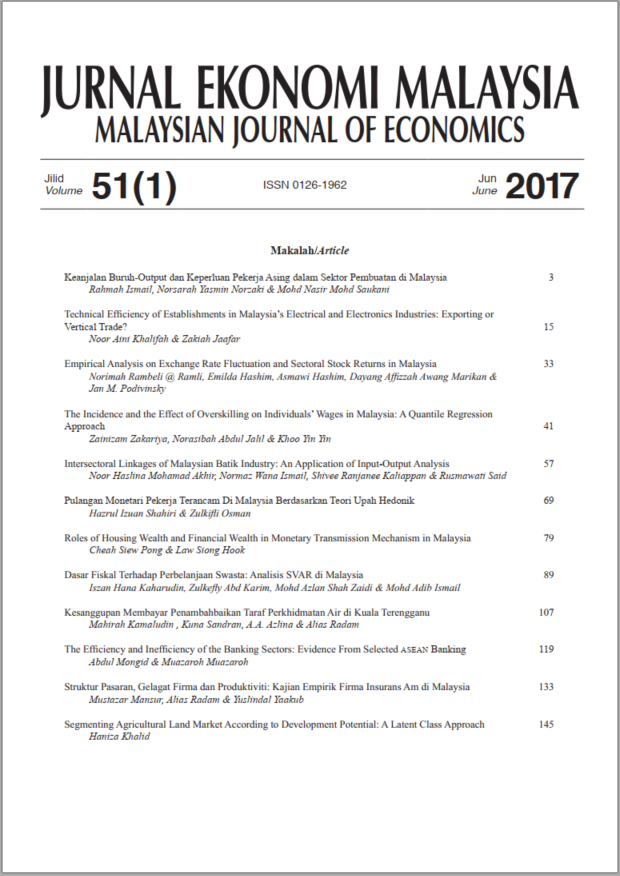Jurnal Ekonomi Malaysia
51 (1) 2017 31 – 38
Economics Department
Faculty Management and Economics
Universiti Pendidikan Sultan Idris
35900 Tanjong Malim Perak
MALAYSIA
Economics Department
Faculty Management and Economics
Universiti Pendidikan Sultan Idris
35900 Tanjong Malim Perak
MALAYSIA
Economics Department
Faculty Management and Economics
Universiti Pendidikan Sultan Idris
35900 Tanjong Malim Perak
MALAYSIA
Economics Department
Faculty Economics and Business
Universiti Malaysia Sarawak
94300 Kota Samarahan Sarawak
MALAYSIA
Economics Division, Social Sciences
University of Southampton
Southampton
SO17 1BJ England
UNITED KINGDOM
Abstract
The purpose of this study is to observe the impact of the exchange rate fluctuation in Malaysia on sectors stock returns by using an augmented standard capital asset pricing model from October, 1992 to December, 2015. This paper extends previous studies on exchange rate fluctuation for the case of Malaysia by estimating the augmented capital asset pricing model for the price indexes sectors, including financial, plantation, properties, industrial, tin and mining, trade and services, consumer products and construction sector indexes. Moreover, this study also expands the literature by adapting the modelling proposed by Ibrahim (2008) by considering the exchange rate volatility, Asian financial crisis dummy and pegging exchange rate dummy. This analysis is significant because of the importance of exchange rate fluctuation as drivers of sectoral returns. In general this study successfully documented the exchange rate fluctuation scenario in Malaysia. Overall, the result suggests that the exchange rate fluctuation in Malaysia can be categorized as the long memory in the volatility process. The results further suggest the sectors are largely affected by the currency fluctuated.
Keywords
Bibliography
@article{ramli2017empirical,
title={Empirical Analysis on Exchange Rate Fluctuation and Sectoral Stock Returns in Malaysia},
author={Rambeli@Ramli, Norimah and Hashim, Emilda and Hashim, Asmawi and Affizzah Awang Marikan, Dayang and Podivinsky, Jan},
journal={Jurnal Ekonomi Malaysia},
volume={51},
number={1},
pages={31—38},
}
Receive updates when new articles are published.


